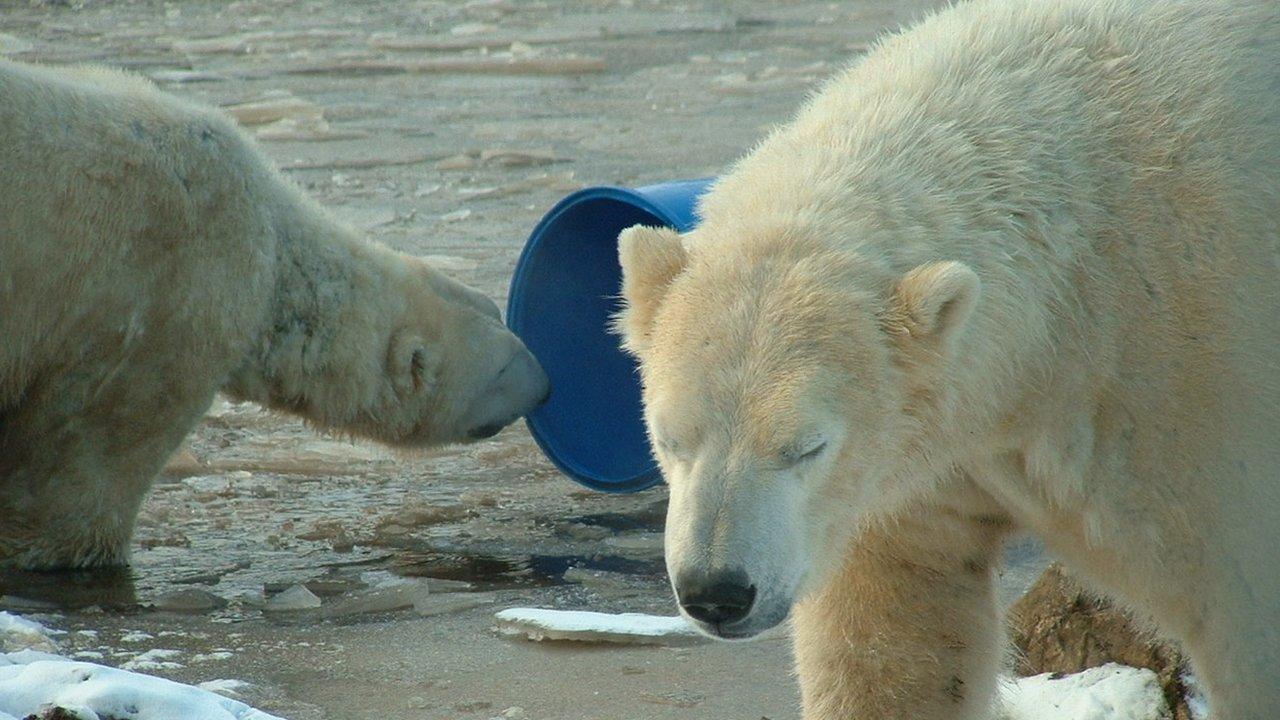New phase in Scottish polar bear breeding project
- Published

Polar bear cubs were last raised in the UK in the early 1990s
An attempt to breed polar bears in Scotland looks set to go ahead this year.
Polar bear cubs were last born in the UK almost 25 years ago.
The Royal Zoological Society of Scotland (RZSS) has begun preparations to pair up two bears at its Highland Wildlife Park near Aviemore.
A crate has been placed in the male bears' enclosure which will be used to transport Arktos to where the female, Victoria, is kept.
A scheme to breed the first polar bears in Scotland gets under way at Highland Wildlife Park in Kingussie.
RZSS said captive breeding formed an important part of conserving polar bears, which are classified as "vulnerable" on the International Union Conservation of Nature's Red List of Threatened Species, external.
But animal welfare organisations OneKind Scotland and Born Free Foundation said tackling climate change to better protect wild bears should be the focus of conservation efforts rather than captive breeding.
Arktos shares an enclosure with a younger male bear called Walker.
Genetically important
The older bear has been selected for breeding because he is considered to be a genetically more important male, according to RZSS. Walker's genes are already well represented within the captive population.
Victoria, who was brought to Scotland from Aalborg Zoo in Denmark last year and is kept in an enclosure about a mile away from the males, previously raised cubs in 2008.
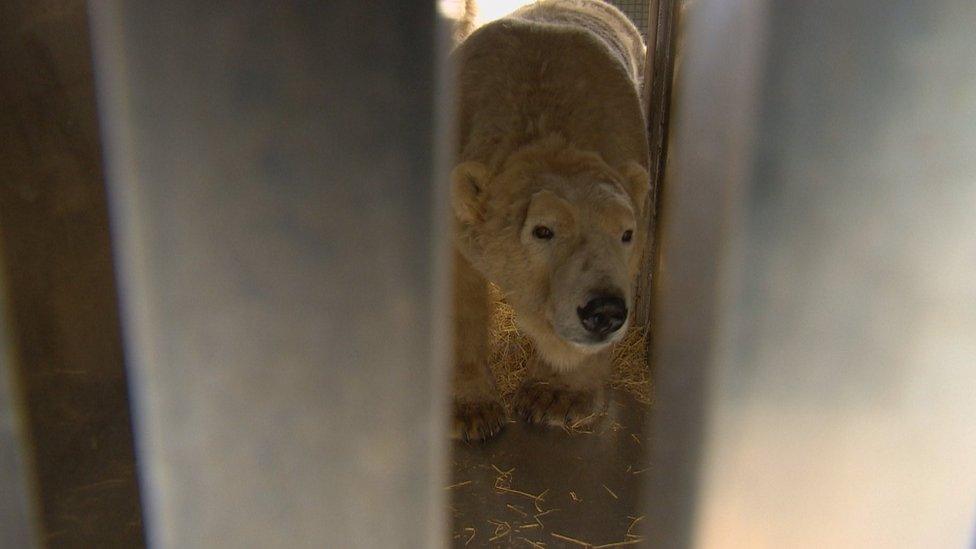
Polar bear Walker exploring the crate that will be used to transport Arktos
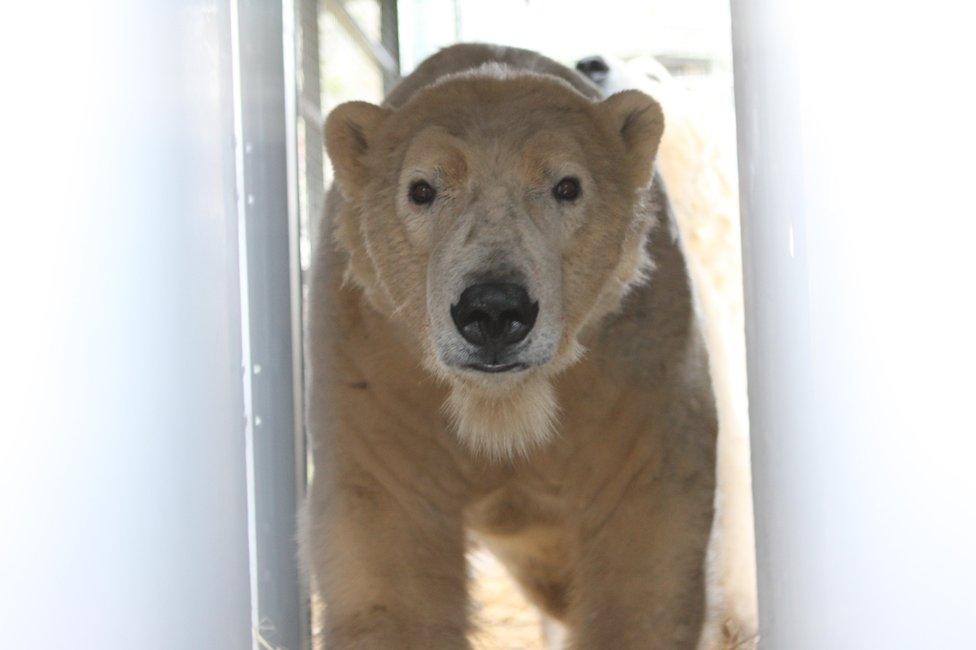
Arktos exploring the crate
Over the course of about a month, park staff hope Arktos will become accustomed to the 3m (9ft 10in) by 1.5m (4ft 11in) by 1.8m (5ft 10in) crate to a point where he can be safely locked inside and moved to the Victoria's enclosure.
Arktos will later be moved back to his own enclosure. RZSS said the areas where it keeps polar bears were larger than those of any other zoological institution in the world.
'Large predators'
Douglas Richardson, head of living collections at the park, said: "When we first take Arktos to Victoria, he will live in a separate enclosure adjacent to hers.
"The two bears will be able to communicate and interact through a secure large fence to start with. We fully expect to see them showing an interest in each other right away.
"As with any introduction of large predators, the process must be approached slowly and carefully, paying close attention to positive behavioural indicators, like vocalisations and body posture.
"Whether we wait until Victoria comes into full breeding condition before mixing them together will depend on how they react to each other in the build-up to that key point."
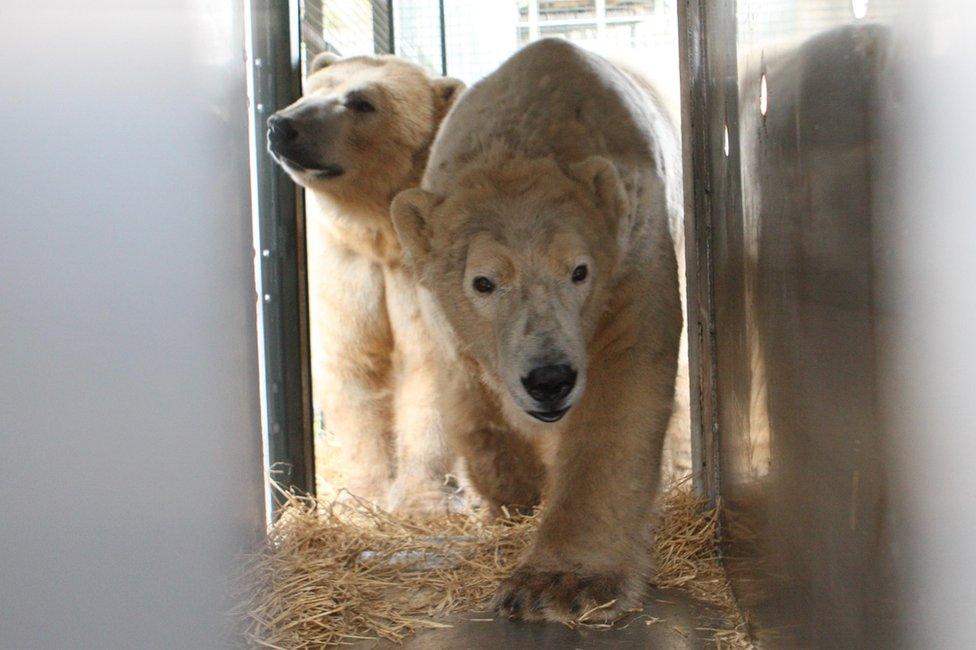
The box could remain in the male bears' enclosure for a month before Arktos is moved to where Victoria is
Mr Richardson said that in "an ideal world" polar bear conservation efforts would take place entirely in the wild.
But he said: "Unfortunately this is not the scenario we are dealing with. The next best thing is a combined approach, with in-situ and ex-situ work taking place simultaneously and in a joined up manner.
"The zoo community has a duty of care to help this species survive and collectively our work is helping to preserve as varied a mix of genes as possible.
"It will also maintain the option of being able to return animals to the wild at some point in the future.
"Whilst Victoria's cubs will never go back into the wild themselves, further down the line her offspring may well play a key role in restoring or augmenting populations in the Arctic."
'Main threat'
Harry Huyton, director of OneKind Scotland, said polar bears did not fare well in captivity and required huge territories in which to roam and thrive.
He said: "Even with the greatest efforts from zoos, it's hard to see how polar bears confined to small enclosures will be able to have good lives.
"If the Highland Wildlife Park believes this is about conservation they need to demonstrate how breeding a small number of captive polar bears in Scotland will benefit the wild population.
"Ultimately, the main threat to polar bears is climate change and unless we address that there will be no suitable habitat to release captive bred animals into."
Mr Huyton added: "If you want to protect polar bears climate change should be your focus, not building a captive population of bears with no place to go."
The Born Free Foundation said it was also opposed to the captive breeding of polar bears.
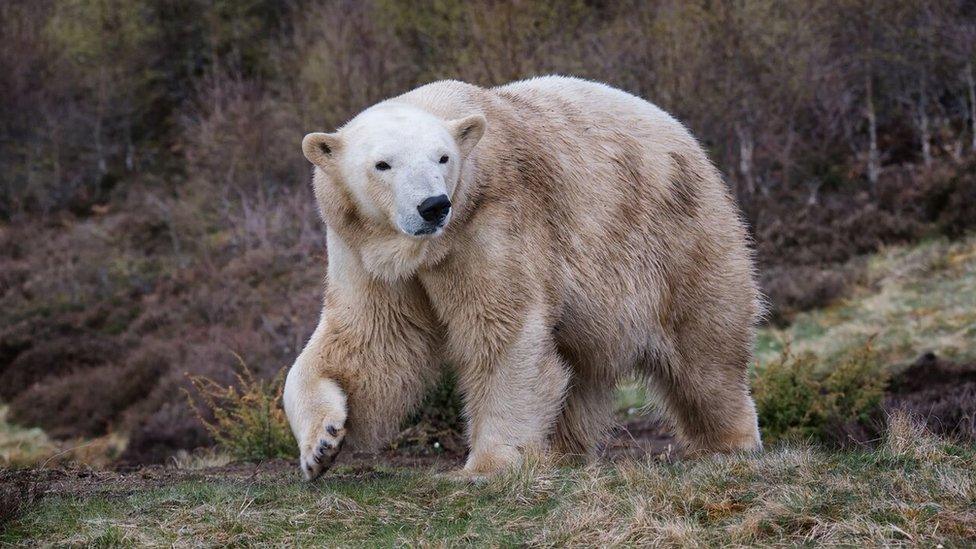
Victoria was brought to the Highland Wildlife Park last year
The Highland Wildlife Park had hopes in 2011 of pairing up Walker, who has been at the park for about six years, with a mate but that plan was put on ice following suspicions that the planned partner was already pregnant.
Arktos arrived at the park in April 2012 from a zoo in Hannover, Germany.
When being given health checks, park staff talk to Arktos in German, the language he heard when he was in the zoo in Hannover.
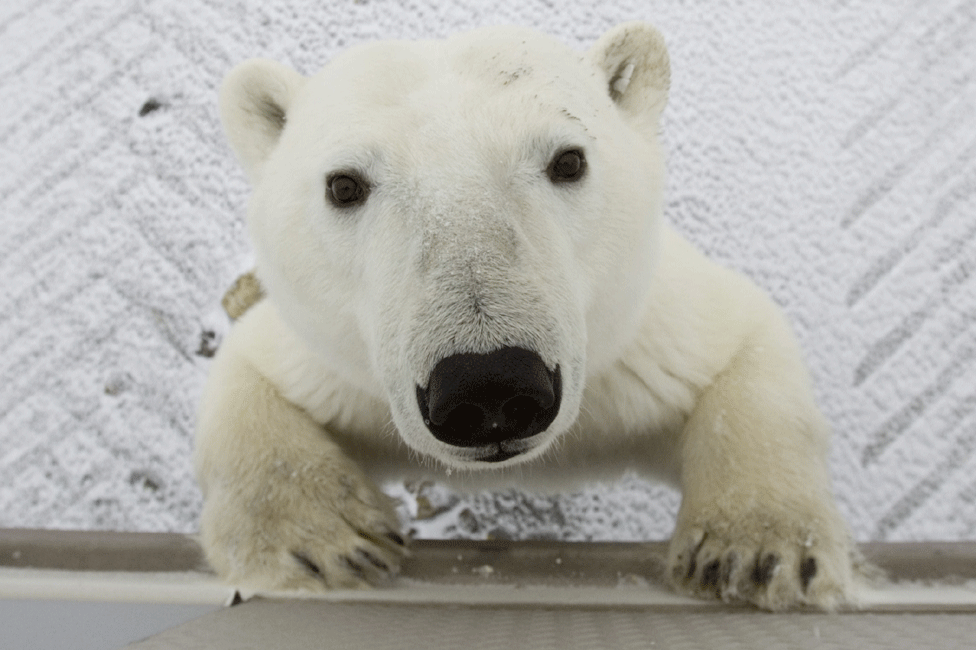
Polar bears are classified as vulnerable by the International Union Conservation of Nature
- Published28 April 2015

- Published25 March 2015

- Published29 April 2014
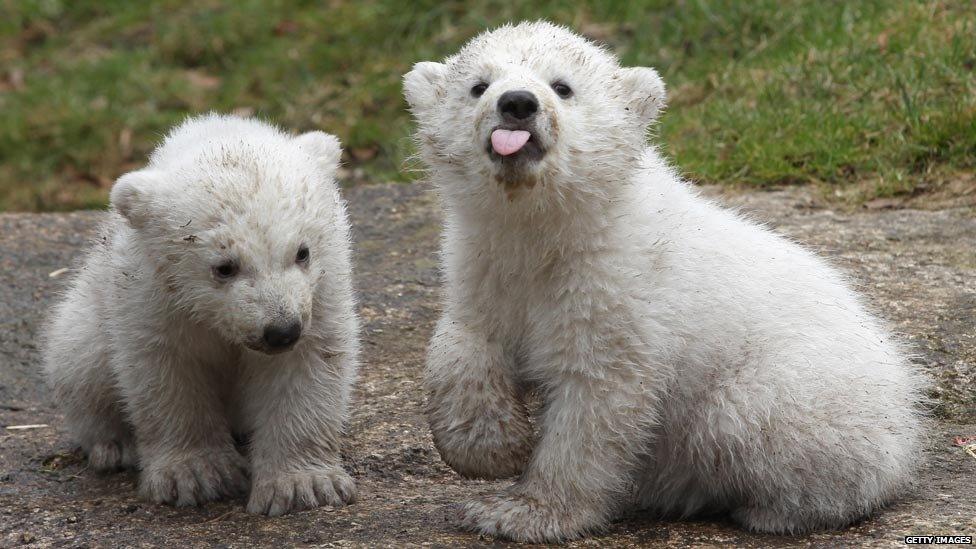
- Published31 January 2013
